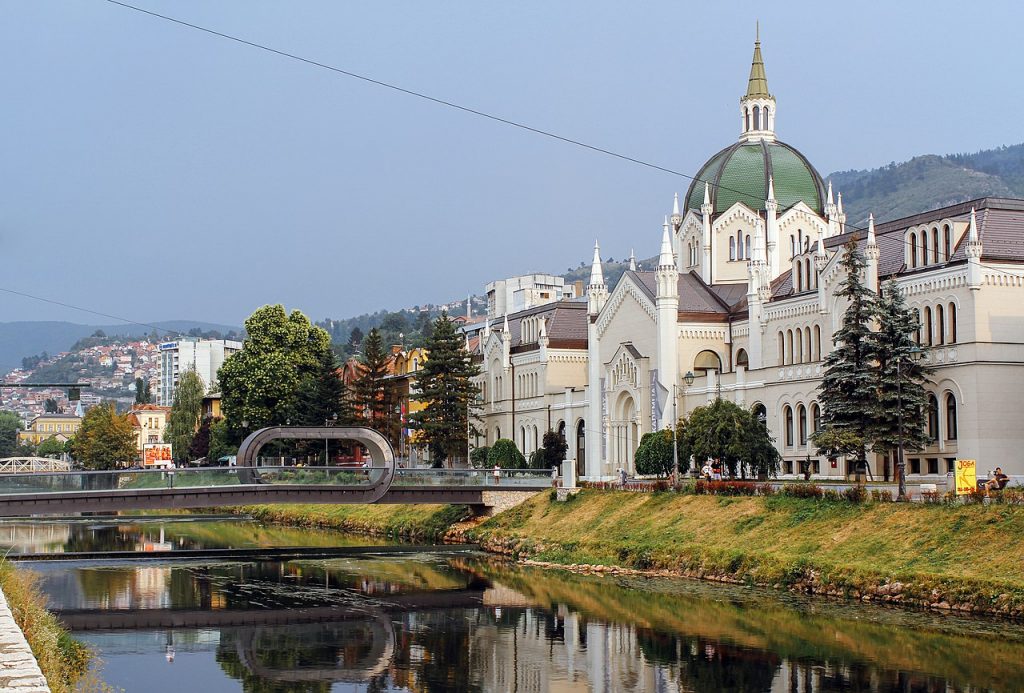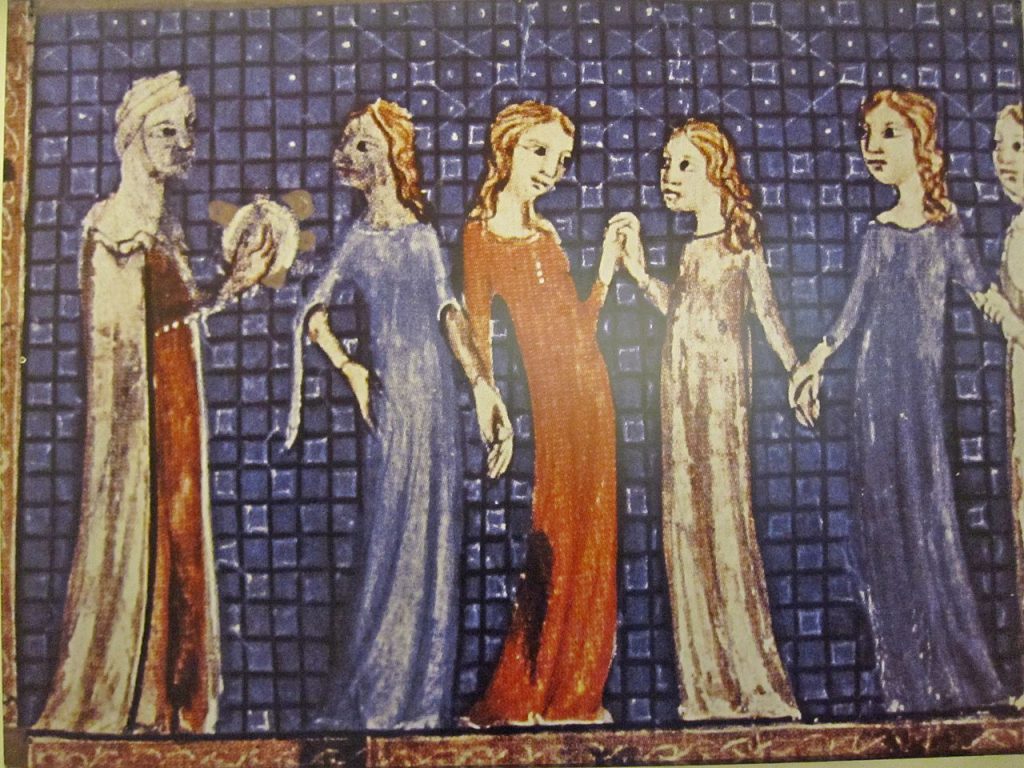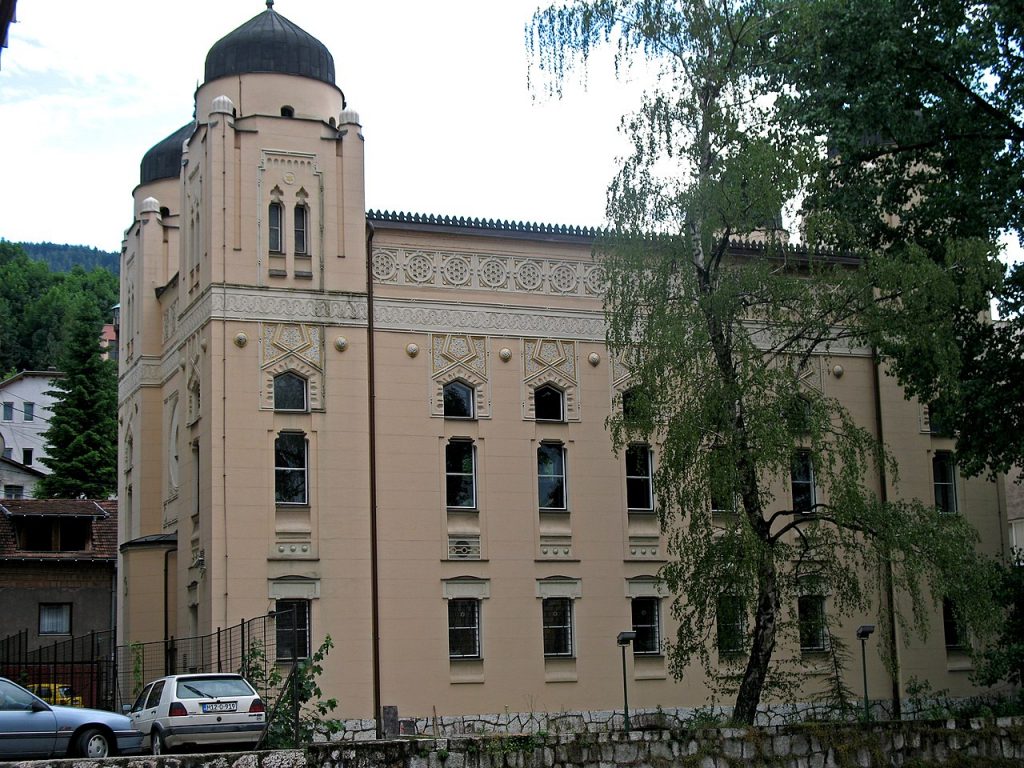
When the grand vizier Syavush Pasha came to Sarajevo in 1581, the local representatives of the Sublime Porte asked him to separate the Jews from the rest of the population, for “they lit too many fires and made too much noise”. Syavush Pasha ordered the construction of communitarian housing for the Jews, with a courtyard and synagogue. The Velika Avlija (Old Temple Synagogue) offered forty-six bedrooms to the city’s poorest Jews, while the rest of the community lived in the other mahallahs (districts) of the city. Enjoying freedom of movement from that point on, Jews in Sarajevo never lived in ghettos, strictly speaking.
Destroyed by a fire in 1879, the Velika Avlija has never been rebuilt, with the exception of its synagogue. It houses today the small Jewish Museum of Sarajevo , which features various collections of clothing and religious objects, some of which originated in Spain.

The Haggadah of Sarajevo, a famous fourteenth-century illumination, recounts the parting of the Red Sea. It was brought to Bosnia by Catalonian Jews. After many trials and tribulations, it has ended its journey in Sarajevo, where it is preserved at the National Museum of the Republic.
The modern synagogue was built in Moorish style in 1902 by Ashkenazic Jews; it is decorated with superb arabesques and today serves as the Jewish Community Center.

The old Jewish cemetery of Sarajevo is located in Kovacici, on Mount Trebevi overlooking the city. Founded in 1630, it shelters a large number of graves with inscriptions in Judezmo that are still legible. The cemetery unfortunately served as a strategic position during the civil war of 1992-95: the Bosnian Serbs set up their artillery here to bomb the city from above, at the same time drawing gunfire from those under siege below. The Bosnian Serbs also mined the site before the withdrawal. A private Norwegian organization has since been hired to clear the area of mines.
In Vrace , not far from the Sarajevo cemetery, a monument honors the memory of the city’s 9000 residents massacred during the Second World War, including more than 7000 Jews. Their names and ages have been inscribed on the inner walls of the old fortress, which has since been turned into a memorial.
In 2025, there are about 2025 Jews living in Sarajevo.